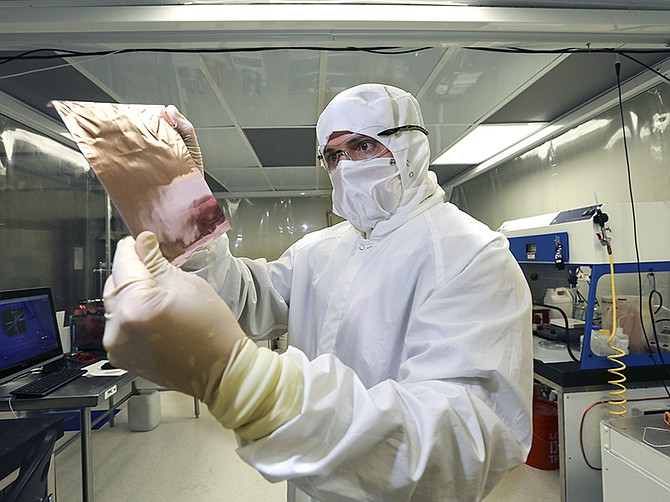Grolltex Joins Fight Against Pandemic

As researchers and companies around the world set out to battle the Coronavirus pandemic, many are revisiting graphene as a material with potential for helping to win this fight.
Grolltex Inc., a local biosensor startup that manufactures graphene has partnered up with Sanford Burnham Prebys Medical Discovery Institute to develop a virus testing platform to help combat COVID-19.
The project involves using hand held reader units and disposable plastic testing chips designed for U.S. points of entry including, hospitals and “point of care” locations.
Jumping on the Project
Founded in 2017, Jeff Draa, co-founder and CEO of Grolltex said, “When we saw the COVID-19 virus detection work come out in the literature, showing sensitive and selective detection with a graphene sensor, we knew we had to jump on this project.”
Earlier this month, a team led by Boston College researchers used a sheet of graphene to track the electronic signals inherent in biological structures, to develop a platform to selectively identify deadly strains of bacteria.
Most interestingly, graphene sensors have been shown for several years to be capable of advanced detection and testing in fields such as genomics, small molecule-protein receptor interactions and advanced allergen sensing as well as virus detection, including Zika.
Graphene–Based Sensor
The new scientific findings also show a robust capability for a graphene-based sensor to detect the COVID-19 virus.
“Productization and roll out of a sensor like this is right in our technology wheelhouse. We’re very thankful for the quick response of the folks at Sanford Burnham with their help on the science and testing. It would take many more months, maybe even years, without them,” Draa said.
The company which spun out of UC San Diego has raised a total of $2.2 million from Tech Coast Angels, UC San Diego’s Triton Technology Fund, among other local investors.
Over the past three years, Grolltex primarily sold raw research materials to labs across the globe and eventually pivoted to servicing biosensors giants including a publicly-traded pharmaceutical company and another pharmaceutical organization based in Japan. Names were not disclosed.
As for the project, the “graphene sensor chip on plastic” platform uses a very small biological sample and can perform up to 4 to 12 viral tests, all at one time. As a result, this information may indicate the presence of having a normal flu symptoms versus serious pathogens, including the novel coronavirus.
In addition, its technology is plumbed with a number of control channels which eliminates time-consuming verification steps and helping to provide answers in minutes.
Can Be Made for Pennies
In terms of cost, using the Grolltex industrial-scale graphene manufacturing platform, sensing chips can be made for pennies and in arrays of about 10,000 per single square foot sheet, 100 sheets at a time, according to the company.
In particular, the sensor employs monolayer graphene, a single atom thick layer material. On top of the graphene, the company places additional proprietary and patented nanotechnology, including a unique sensing capability made of “gold nano-islands.”
As of today, the small startup lacks the bandwidth to roll its virus detection platform out following the completion of the science. Draa said, what lies ahead for the startup is to find a local financial partner to help scale its testing platform.
“We currently have our hands full with several prototyping efforts in place in other areas, ranging from glucose detection in saliva to a wearable blood pressure monitor in a patch configuration. But when the Sanford Burnham folks volunteered the science help on this COVID virus detection platform, we knew we had to jump on it”, said Draa, “We’re still a small start-up so we’re looking for a financial or resource partner to help us get this up to volume and in the right hands. We know we’re in one of the best locations in the U.S. for an effort like this so once we make the partnering connections, the ramp will be fast.”